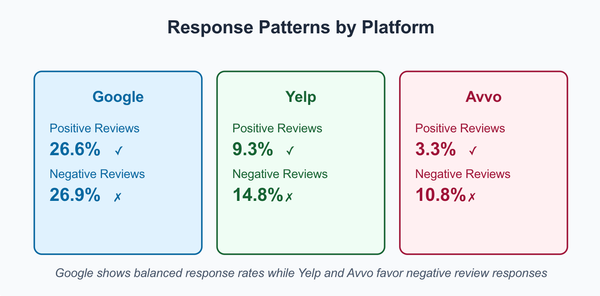How to Apply for a Green Card in the U.S. - A Comprehensive Guide

The Green Card, also known as the Permanent Resident Card, is a key document that allows immigrants to live and work permanently in the United States. While it offers many advantages, such as job opportunities and benefits, obtaining one can be challenging. In recent years, the number of pending Green Card applications has soared, reaching nearly 35 million, while the approval rate has dropped significantly from 7.6% to under 4%.
A recent report by the CATO Institute shows that only about 3% of applicants in fiscal year 2024 are expected to receive permanent residency. To tackle this issue, the U.S. government introduced the 2023 Eliminating Backlogs Act, which aims to reduce the application backlog and address labor shortages. It also grants immediate Green Card eligibility to people from countries with high demand, such as India, China, and Mexico.
This blog will explain everything you need to know about U.S. green cards, including who is eligible, how to apply, and what to expect during the process.
What Is a Green Card?
A Green Card grants you permanent residency in the United States. It allows you to live, work, and travel freely within the country. While it is not the same as citizenship, it provides many similar benefits, including access to specific government programs.
Once you have a Green Card, you will be issued a US Green Card number, a unique identifier assigned to permanent residents. You can also sponsor close family members, like your spouse or children, for their residency. After a certain period, you may be eligible to apply for U.S. citizenship.
Who Can Apply for a Green Card?
Not everyone can apply for a U.S. green card! You need to meet specific eligibility requirements. There are several categories under which you may qualify:
1. Family-Based Green Cards
- Immediate Relatives: Includes spouses, unmarried children under 21, and parents of U.S. citizens. A U.S. citizen must be at least 21 to apply for their parent.
- Other Family Members: Covers unmarried adult children of U.S. citizens, spouses and children of permanent residents, married children of U.S. citizens, and siblings of U.S. citizens.
2. Employment-Based Green Cards
- EB-1: For individuals with exceptional skills, such as renowned scientists, artists, or multinational executives.
- EB-2: For advanced professionals or people with exceptional abilities in science or business.
- EB-3: For skilled workers, professionals, and certain unskilled workers.
- EB-4: For special immigrants like religious workers or employees of global organizations.
- EB-5: This is for investors creating U.S. jobs by making significant business investments.
3. Refugee or Asylee Status
If you were granted asylum or entered the U.S. as a refugee, you can apply for a Green Card after one year of living in the U.S. under that status.
4. Diversity Visa Lottery
The DV Lottery annually provides up to 50,000 U.S. green cards to individuals from countries with low U.S. immigration rates. Winners are randomly selected but must meet specific eligibility requirements according to US immigration law.
5. Special Immigrant Status
This category includes:
- Religious workers.
- Employees of U.S. foreign service or international organizations.
- Alien minors under U.S. court protection.
- Retired foreign service employees.
6. Victims of Abuse, Crime, or Human Trafficking
- VAWA Petitioners: Includes abused spouses, children, or parents of U.S. citizens or permanent residents.
- U Visa Holders: For victims of specific crimes who suffered from mental or physical abuse.
- T Visa Holders: For individuals who were victims of human trafficking.
7. Long-Time Residents
According to USCIS, Individuals who have lived continuously in the United States since before January 1, 1972, may be eligible for a U.S. resident alien green card. This category acknowledges those who have established deep roots in the U.S. over decades. Proof of continuous residence, such as utility bills, tax records, or other documentation, is required to qualify under this provision.
How to Apply for a Green Card?
The steps for applying for a Green Card depend on the category under which you qualify. However, most applications follow a similar process. Here’s a step-by-step guide:
Step 1: Determine Your Eligibility
Identify which Green Card category you qualify for, such as family sponsorship, employment, refugee/asylee status, or the Diversity Visa Lottery. Each category has specific requirements, so review them carefully to ensure you meet the criteria before proceeding.
Step 2: File a Petition
Most U.S. green card applications start with someone filing a petition on your behalf;
- Family-Based Applications: A relative must submit Form I-130 (Petition for Alien Relative).
- Employment-Based Applications: Your employer files Form I-140 (Immigrant Petition for Alien Worker).
- Special Categories: Depending on your situation, you may need to file other forms, like Form I-918 for U Visa holders or Form I-360 for VAWA self-petitioners.
Step 3: Wait for Petition Approval
After submitting the petition, USCIS will review it. This step can take months or even years, depending on your category and country of origin. Approval is necessary before moving forward with your Green Card application.
Step 4: Apply for a Green Card
After the petition is approved, you can apply for a Green Card;
- If you’re in the U.S., file Form I-485 (Application to Register Permanent Residence or Adjust Status).
- If you’re outside the U.S., follow consular processing instructions and attend an interview at a U.S. embassy or consulate in your home country.
Step 5: Attend a Biometrics Appointment
USCIS will schedule a biometrics appointment where you will provide fingerprints, a photo, and a signature. These are required for background checks to ensure your eligibility.
Step 6: Prepare for an Interview
An interview may be required to review your application in detail. During the interview, USCIS or consular officers may ask questions about your background and eligibility to confirm your qualifications.
Step 7: Wait for a Decision
Once the interview is complete, USCIS or the consular office will decide on your application. The decision process can take time, so be patient while awaiting approval.
Step 8: Receive Your Green Card
If your application is approved, you will receive your Green Card by mail if applying from within the U.S. If you are applying from outside the U.S., you will get a visa to enter the U.S. as a permanent resident.
Are you struggling with your Green Card application? Choose a reputed immigration attorney on LawyersRating.fyi today. Begin your journey now!
5 Challenges You May Face in the US Green Card Process
Applying for a Green Card can be a long and complicated process. Here are five common challenges many applicants face:
Lengthy Processing Times
The U.S. green card process can take years, depending on the category and your country of origin. Family-based applications, especially for siblings or adult children of U.S. citizens, often have long waiting periods due to annual limits on visas. Employment-based applications can also face delays, particularly in high-demand categories.
Check out these U.S. immigration trends to know more about what's new!
Complex Eligibility Requirements
Understanding the eligibility criteria can be tricky. Each category, such as family-based or employment-based, has specific rules. For example, employment-based applicants need an employer’s sponsorship or must meet high standards like exceptional abilities or significant investments.
Strict Documentation
The process requires many documents, such as proof of identity, financial support, or relationship to the sponsor. Any errors or missing paperwork can lead to delays or rejections, stressing the process.
Backlogs for Certain Countries
Applicants from countries like India, China, Mexico, and the Philippines often face longer wait times due to per-country visa limits, creating additional frustration.
High Costs
The fees for forms, biometrics, and legal assistance can add up quickly. For some, the financial burden is a significant barrier to completing the process.
U.S. Green Card Services by Expert Immigration Attorneys!
Applying for a U.S. green card may seem challenging, but it can be accomplished with proper preparation and a clear understanding of the process. Whether applying through family, employment, or other categories, ensure you collect all necessary documents, follow each step carefully, and consider professional guidance. These professionals can also guide you through special cases, such as how a U.S. citizen can help an F1 to get a Green Card or how to manage the process efficiently if you're facing backlogs or visa caps.
LawyersRating.fyi is here to help you connect with the best legal experts in immigration. Our goal is to provide easy access to experienced lawyers who can guide you through the process and offer the support you need for success.





